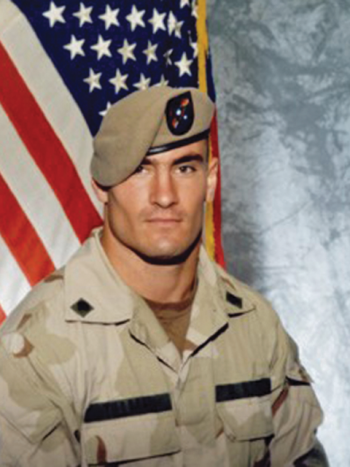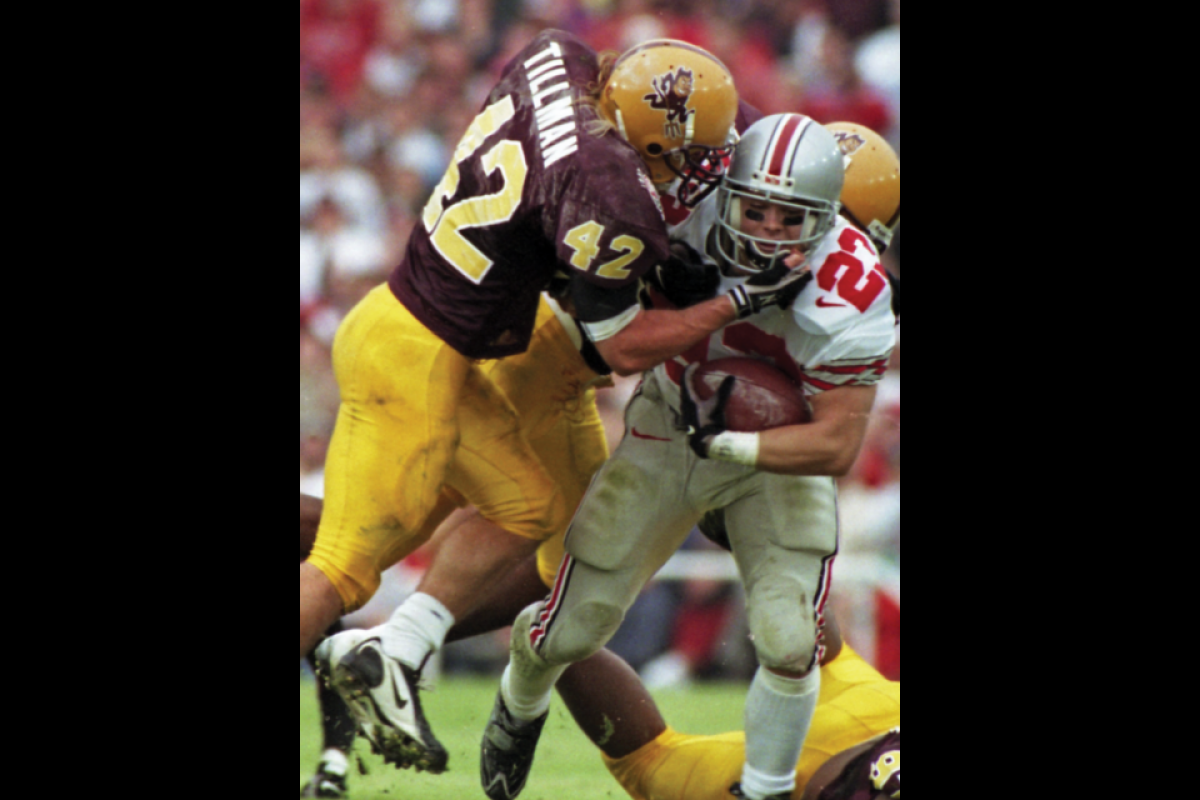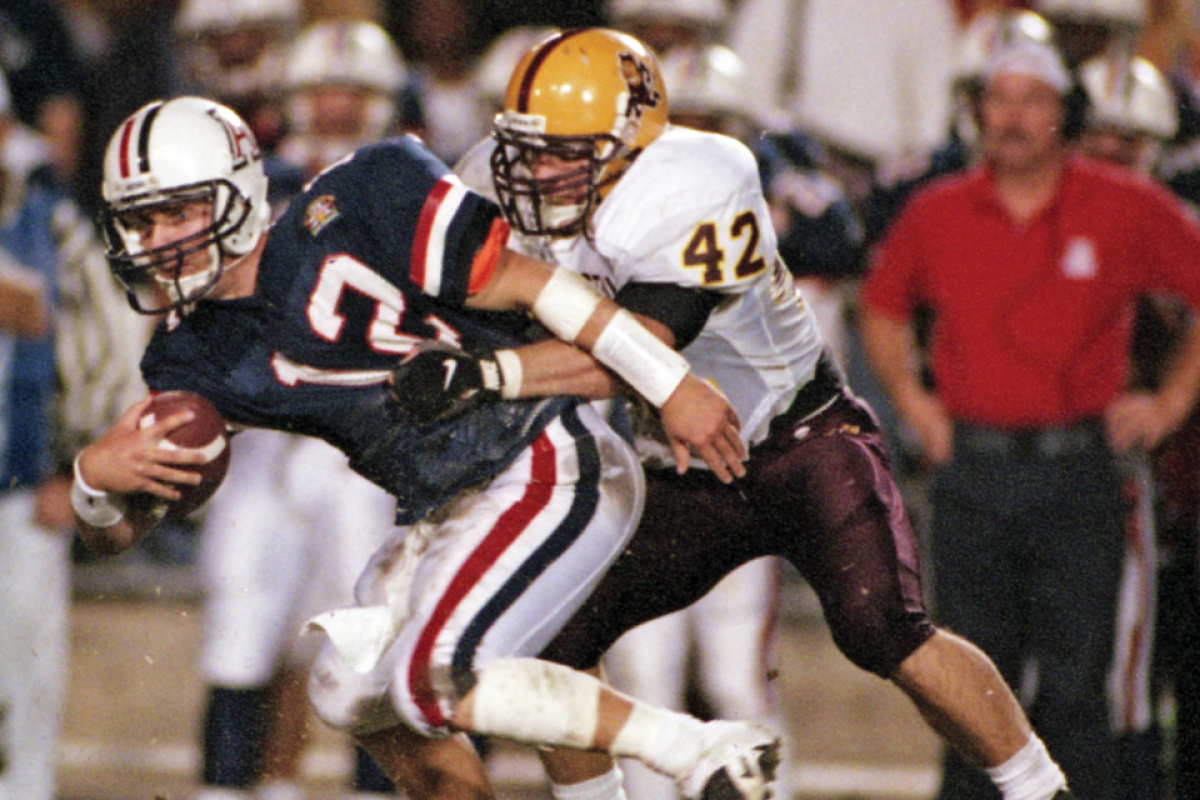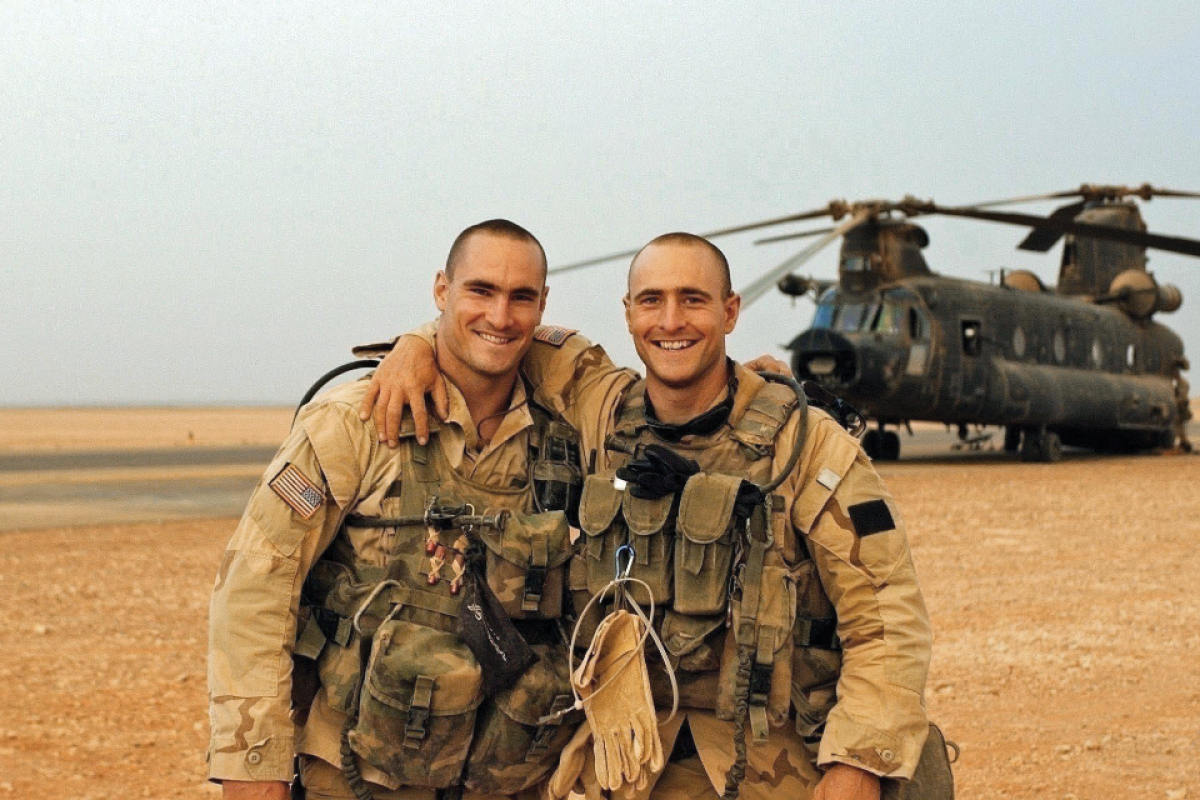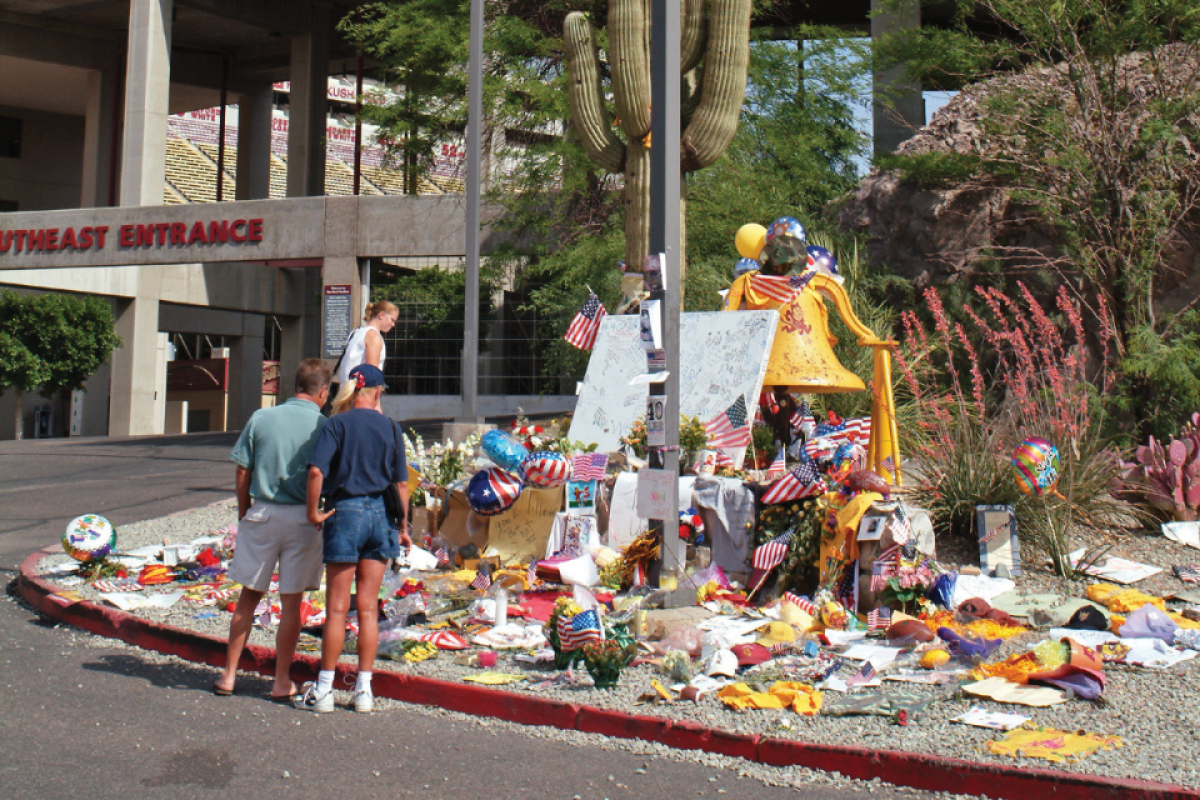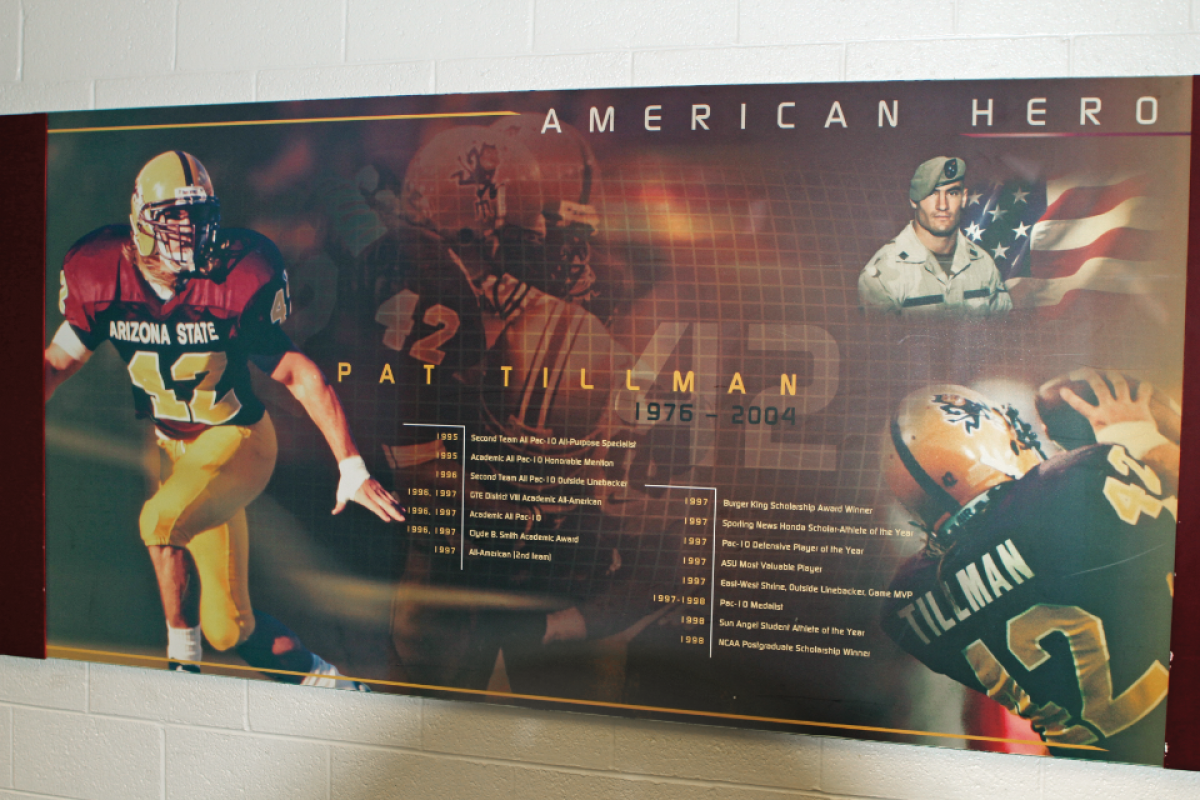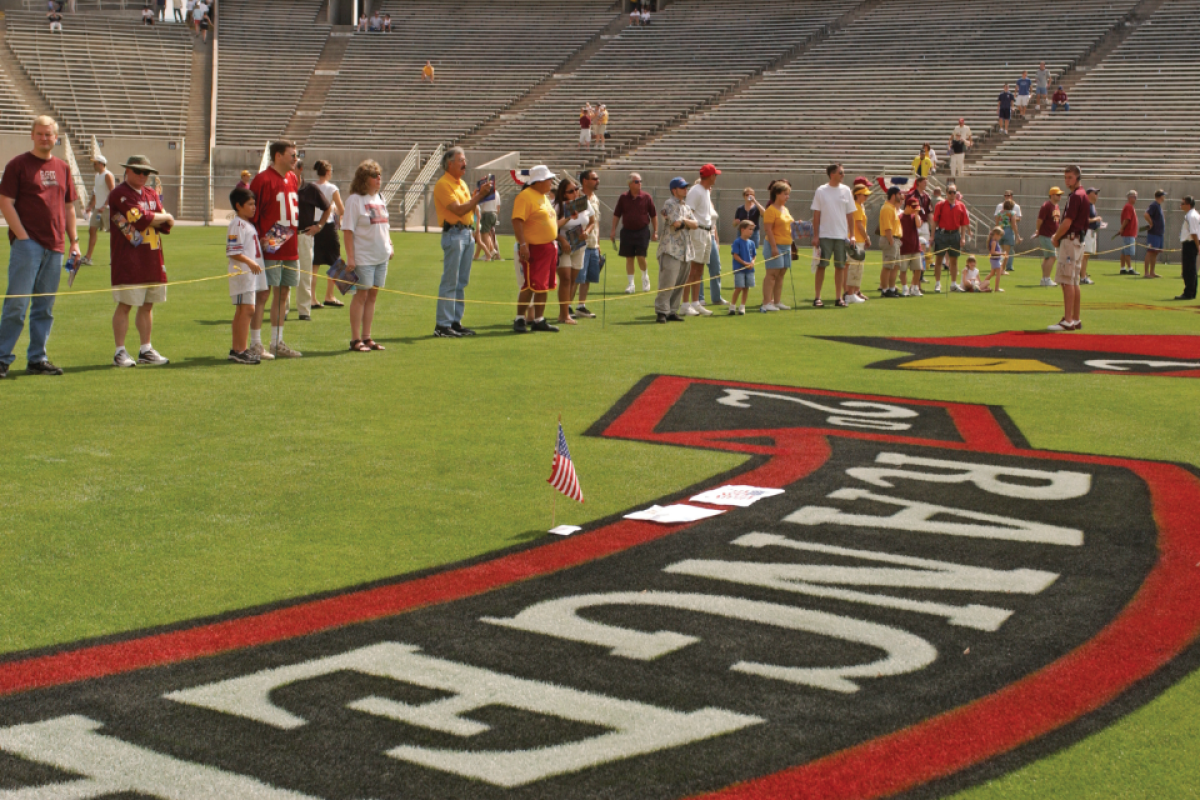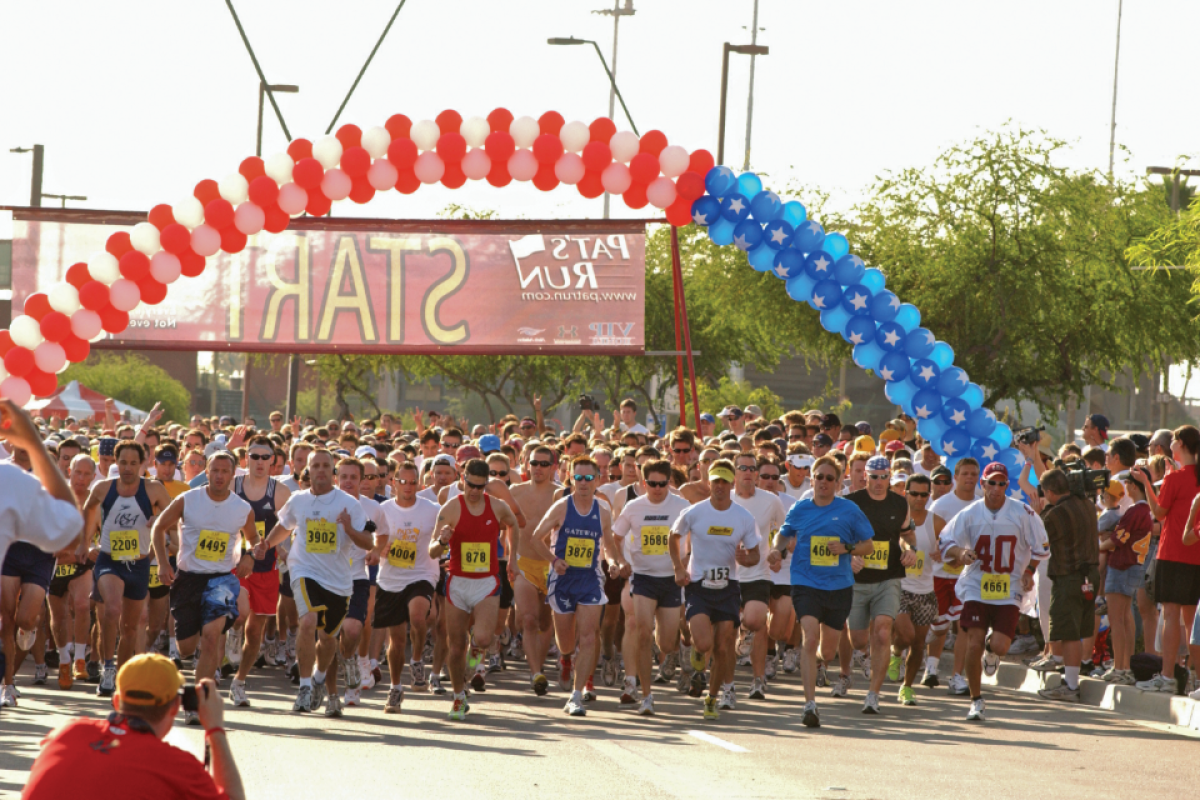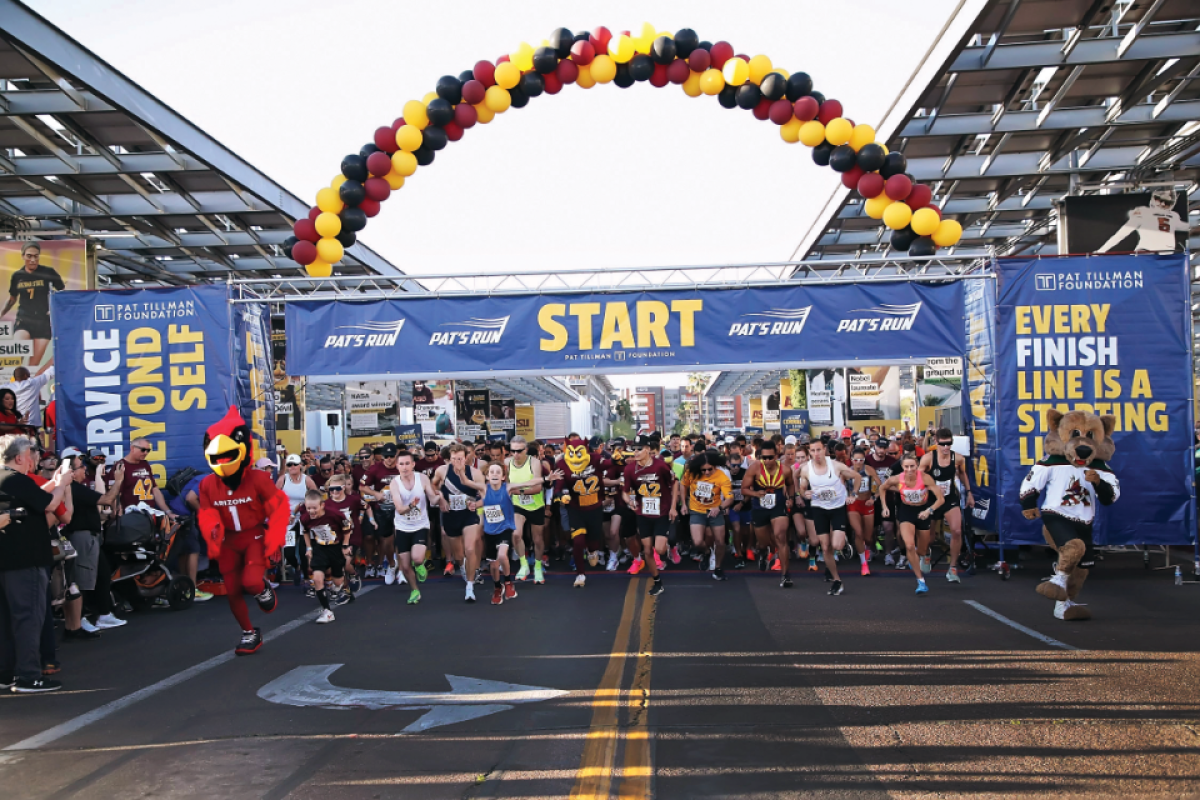True to Tillman
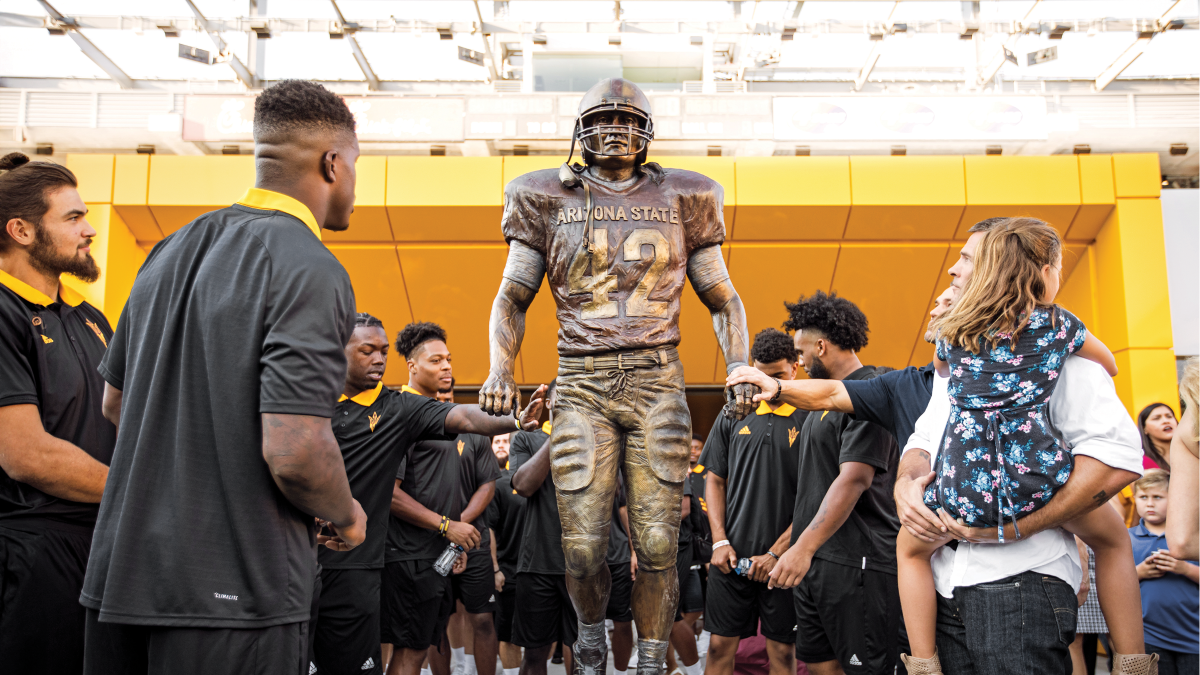
The 2017 Sun Devil Football team at the Pat Tillman statue unveiling. Photo by Charlie Leight/ASU News
Story by Sara Clemence
Editor's note: This story originally appeared in the fall 2024 issue of ASU Thrive magazine.
In the spring of 2002, Alex Garwood went on a run with his brother-in-law and friend, Pat Tillman.
The two had trained for marathons together, but on that day, words were far more important than the workout. A week earlier — eight months after Sept. 11 — Tillman had announced that he was going to walk away from a multi-million-dollar NFL contract to join the Army with his brother, Kevin.
“My intent was to talk him out of it on the run,” Garwood recalls.
On the way up an oak-shaded hill in Almaden, the neighborhood in San Jose, California, where their wives’ parents lived, Garwood peppered Tillman with questions. Why join as an enlisted soldier rather than an officer?
“To his credit, he listened,” Garwood says. “And we got to the top and he looked at me and was like, ‘Is that it?’ Then we turned around and headed back down, and he answered every one of my questions.”
Tillman was a scholar-athlete who led the Sun Devils to the 1997 Rose Bowl, graduated summa cum laude from the W. P. Carey School of Business, then was drafted by the Arizona Cardinals. On the field, he was known for his intensity as a linebacker and safety.
Off it, he relished physical challenges. He was well-read, curious, irreverent and stubborn.
On April 22, 2004, Tillman was killed in Afghanistan. The news shocked his loved ones and the country as a whole and galvanized his friends to create a run that’s growing stronger 20 years later and supports the charitable foundation in his name, the Pat Tillman Foundation.
Celebrating 20 years of Pat’s Run
A few months after Tillman’s funeral, a small group of Tillman’s friends — including Garwood, Perry Edinger, Doug Tammaro, Mark Zimmer and Christina Hundley, ’98 BA in journalism — gathered to figure out a way to honor Tillman.
The group set themselves a daunting task: Create an event to honor their boundary-pushing, full-of-life friend who had also become an American hero.
They settled on a run — with some twists.
The length would be 4.2 miles, in tribute to Tillman’s ASU jersey number. Their vision? That the run would not finish on a road or in a parking lot, but at the 42-yard line in the stadium on the ASU Tempe campus.
“This event would not happen without ASU and the city of Tempe,” Hundley says. “I mean, a race is a race, right? But the fact that we had that buy-in … it’s on ASU turf, and the locale is part of the fabric of the event.”
Pat’s Run launched in 2005 with 5,000 participants. Today, more than 30,000 people across all walks of life participate, in Arizona as well as in Tillman Honor Runs around the world.
Everyone who helped create Pat’s Run has a favorite stage of the race.
For Hundley, it’s the start, which takes her back to the grief and celebration of the very first run. “I still get goosebumps and tears at the starting line,” she says.
Tammaro, who got to know Tillman as assistant sports information director at ASU, loves seeing runners and walkers of all shapes, sizes and ages at the finish line.
“When I see the person run across in 20 minutes and win the race, that’s awesome,” he says. “But when I see somebody cross the finish line after 90 minutes, and maybe they’re not in the best shape, but you can tell this was an event that they were proud to do, I think that would mean as much to Pat as anything else.”
This event would not happen without ASU and the city of Tempe.
Christina HundleyCollege friend of Pat Tillman
Creating a legacy
On April 23, the day after Tillman died, Garwood says, money started arriving.
“People just started writing checks. ‘Here’s a check for $5.62,’” he says. “‘My son broke open his piggy bank and sent you all the money he had.’”
It quickly became apparent that there needed to be a structure for managing donations. And it had to be well run, it had to be classy — because, as Garwood says, that was Tillman.
In that first year, the family considered what Pat had been passionate about. Life, they thought — but how do you create a foundation about life? They partnered with ASU to endow a program, Leadership Through Action, that helps students identify and channel their passions.
The foundation’s focus became funding scholarships and leadership development for active service members, veterans and military spouses. In 2009, they launched the national Tillman Military Scholars program, distinct from the original ASU Tillman Scholars and known today as Tillman Scholars.
Over the past two decades, the Pat Tillman Foundation has invested over $34 million in scholarships and leadership development in support of 850 Tillman Scholars. Each year the foundation receives thousands of applications, narrowing them to 60 individuals. They look for applicants who are academically driven, give back, demonstrate a desire to make an impact and model humble leadership.
Tillman Scholars come from all branches of service, enlisted and officers, and a range of backgrounds, Garwood says. One grew up on a reservation in Arizona, got into trouble in high school, and was given a choice between the Marine Corps or jail. He found his calling, becoming the first member of his family to graduate from college.
“Then there’s the Navy SEAL who went to medical school and is now at NASA,” he says. “And everyone and everything in between.”
Katherine Steele, a 2014 Tillman Scholar, has participated in eight of the last 10 runs—Pat’s Run is a substantial source of funding for the organization—and this year became CEO of the Pat Tillman Foundation. She and the foundation are finalizing the next class of Tillman Scholars.
“My favorite job is being able to read these applications,” she says. “It gives you this renewed faith in humanity.”
Inspiring others
It can be strange for people who knew and loved Tillman to see the icon he has become. Hundley says that Tillman Scholars fall hushed when they learn she was his friend. They want to hear stories about him. It can be awesome, and it can also feel disconnected from the person she became friends with and used to hang out between classes and practices.
“I swear, I still feel like I’m walking across campus at 22 years old living that life,” Hundley says.
When Pat’s Run started, many participants knew him. That’s not true today; some weren’t even born in 2004. But the event is a chance to share his memory and to carry his legacy into the future.
“Pat started it,” Garwood says, “just by the way he lived his life. If you’re inspired by him because he was a great football player or swore a lot or had long hair or read, great. But I don’t want you to be like that other than I want you to be who you believe you should be, to think it through, to act like he did.”
Sara Clemence is a reporter and former travel editor for The Wall Street Journal, news director for Travel + Leisure and deputy business editor for the New York Post.
More Sun Devil community

ASU first-gen college student is a leader in sustainability, social justice
Born and raised in Phoenix in a single-parent household, Mauricio Juarez Leon faced struggles growing up that included poverty, malnutrition, domestic abuse and limited resource access. And at the…

These real-life heroes found educational support through ASU Online
When “God Bless America” played at Dani Bermudez’s naturalization ceremony, the moment gave her chills and cemented her resolve to one day serve in the military.The Colombia native enlisted in the…

Sun Devils in the sky
“Today was probably one of the most rewarding days I’ve had at ASU."That was the sentiment given by Andrew Vandertoorn, a C-17 evaluator pilot, first officer and 2002 Arizona State University…
